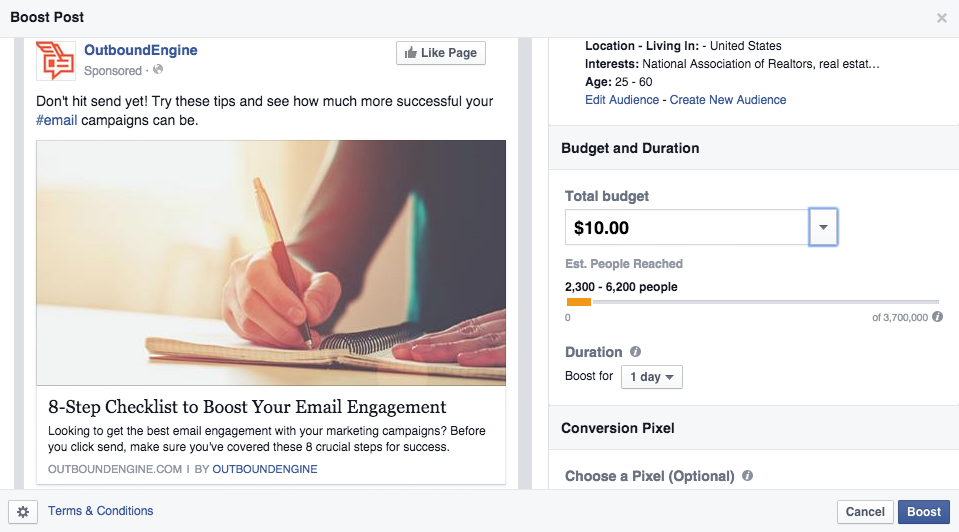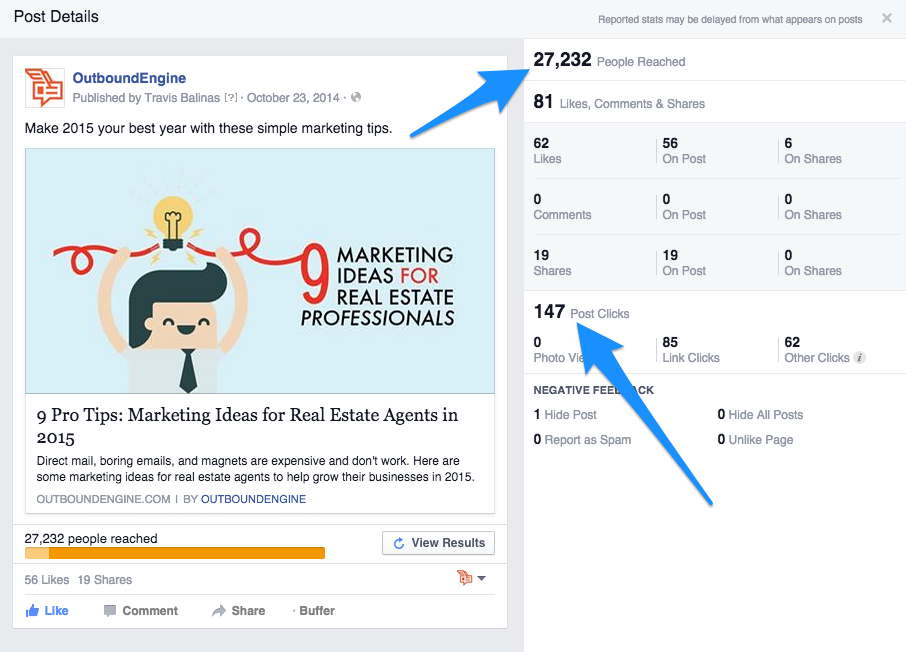Social media marketing is a powerful business tool, but it’s a constantly evolving space. If you want to be seen and heard among the masses, it’s important to stay on top of emerging trends. Even more importantly, knowing how to use the trending methods to your advantage helps you gain exposure and new clients while keeping past clients up to date and establishing yourself within your industry.
Lucky for you, I’ve done the research and pulled all the data you need to know. Here are the four newest social media trends that you should be using right now, as well as how you can make the most of them:
1: Long-Form Content Publishing on LinkedIn
With 347 million users and growing, LinkedIn is a can’t-miss social media opportunity for professionals. LinkedIn not only serves as your digital Rolodex, allowing you to connect with past and present clients, coworkers and industry peers, but it also offers the unique opportunity to publish original long-form content and grow your reputation. Posted content is featured across the site through Pulse, a curated news feed. Think of LinkedIn’s posting platform like a blog, except you don’t have to do as much work to get your content in front of people.
Long-form content publishing on LinkedIn is pretty new. It started in 2014 with a group called LinkedIn Influencers. The Influencers are a hand-picked group of industry leaders selected to spark discussion on topics ranging from leadership to career advice and finance through what are essentially blog posts. Publishing is now available for everyone to use, and the beauty of Pulse is that articles written by Influencers like Arianna Huffington and Bill Gates are sprinkled among posts written by people like you.
Take for example Lynne, a self-proclaimed “Cheeky Post writer and recovering MBA” who has just under 400 professional connections on LinkedIn. Through publishing original content on Pulse, her posts range from 64 views to 64,000 views. Her article “Is Anaheim Mickey Mouse or will it finally stand up to Disney?” was recently featured on the Pulse Editor’s Picks, garnering nearly 3,000 views and sparking conversation through comments.
You can write about your industry experience and what you’ve learned on the job or share research or emerging trends you’ve noticed. Providing advice and information for clients is also helpful. Every post you write will be connected to your LinkedIn profile, so it also serves as an extension of your resume.
2: Native Video Posting on Facebook
Facebook’s recent push to entice users to post native videos—videos uploaded directly to Facebook for sharing—shouldn’t be ignored. Video posts average 62 percent more engagement than photos. If it’s a native video, autoplay is enabled in the news feed. You can still share videos from third-party sites like YouTube or Vimeo, but they are visually downplayed in the news feed.
That means that as users scroll through the news feed, they will see the videos you have uploaded directly to Facebook, which will automatically play when they come on-screen. Users had been quickly scrolling through, they may scroll back to watch more as their eyes naturally catch the sudden movement of the video and their curiosity is piqued. This removes the opportunity for a user to exit to a third-party site like YouTube where distractions are aplenty.
Native video is a fantastic way to increase your organic, unpaid reach on Facebook. Videos that are entertaining or provide useful information are likely to be shared, extending your reach. Here are a few examples of video done well on Facebook.
3: Emoji Hashtags on Instagram
Emojis, which is Japanese for “picture letters,” are those little stickers popping up everywhere online and on our smartphones. You’ve seen them — yellow smiley faces, hearts, dancing ladies, ice cream cones, monkeys, etc.

Just a few years ago, using 🙂 in an email would toe the line between friendly and unprofessional. According to scientists, those emoticons, now replaced with emojis, are here to stay because our brains have learned to respond to emojis in digital conversation the same way we would a human face. Tone and expression that can sometimes get lost in the written word can, in fact, be conveyed and understood through emojis. For example, when we see a smiling emoji, our mood changes and we may even smile in return.
Instagram reports that nearly 50 percent of all comments on Instagram contain emojis. As emoji popularity has gained steam, Instagram made a move that is changing the hashtag game. You can now emoji hashtag. Hashtagging is important on Instagram because it’s how your photos are found by those beyond your core group of followers.
Starbucks has been leading the charge with emoji hashtagging. Iced coffee on the beach gets #(wave), an iced coffee features # (red heart)(coffee), and a trio of summer beverages is treated to #(sun). The sooner you hop on this trend, the sooner you’ll be seen.
Know that you don’t have to sell a physical product to put Instagram to use or use emoji hashtags. We use Instagram as a platform to share our company culture. Real estate agents may want to use Instagram to feature neighborhoods or happy homeowners. The important thing is to have fun with it.
4: Targeting Your Promoted Posts on Facebook
In 2012, a Facebook page’s organic reach through posting was about 16 percent of total page likes. These days that percentage is in the single digits. Why? As a result of the growth in the number of users, pages and aggregate posts, an average user could potentially be exposed to as many as 1,500+ posts a day if everything everyone posted made it to the news feed. But Facebook whittled that number down to 300 because that’s a more realistic number of posts for people to see, which is nice except it also means fewer people see your posts.
However, the silver lining here is that this is a smart move for the users of Facebook. If the News Feed was made up mostly of posts from businesses, Facebook would have a hard time getting users to come back. This also opens up a better opportunity for businesses to reach more specific audiences.
Targeting is available for both organic and promoted (paid) posts. When you target your efforts, you can choose by geographic area, interest, age and gender, as well as people who like your page and friends of people who like your page. You can even upload a list of contact emails.
The logic is pretty simple here: When you strategically focus on your target audience, you’ll see a higher rate of engagement. Good posts to promote are posts that have seen high engagement organically, which is a good sign they will take off even more when promoted. You should also share articles about yourself, milestones and offers. These types of posts are perfect for drumming up new business.

When it comes to promoted posts, a little money can go a long way. After you’ve picked your target audience and how long you want to promote a post, you’ll need to decide on a budget. Based on all the factors you’ve entered, Facebook will give you a range of how many people your post will reach before you purchase. Using Facebook’s Insights feature allows you to track the progress and success of your post.

The Cliff Notes
Let’s recap. Social media is changing at a rapid-fire pace, but thanks to industry experts, the learning curve has been lowered. There are a lot of new trends out there, but the four you should focus on right now are:
- Dipping your toes into LinkedIn’s long-form publishing for added exposure and industry street cred
- Taking emojis for a test ride and using them in your Instagram comments and hashtagging for a stronger emotional connection and more visibility
- Posting engaging and informative native video to Facebook
- Promoting your next big Facebook post
Social media trends are always changing, but one thing’s for sure — social media is here to stay, and we’re here to help you flourish online.


![Better Email Etiquette Equals Better Marketing Results [16 Rules]](https://www.outboundengine.com/wp-content/uploads/shutterstock_411184843-1-400x250.jpg)

